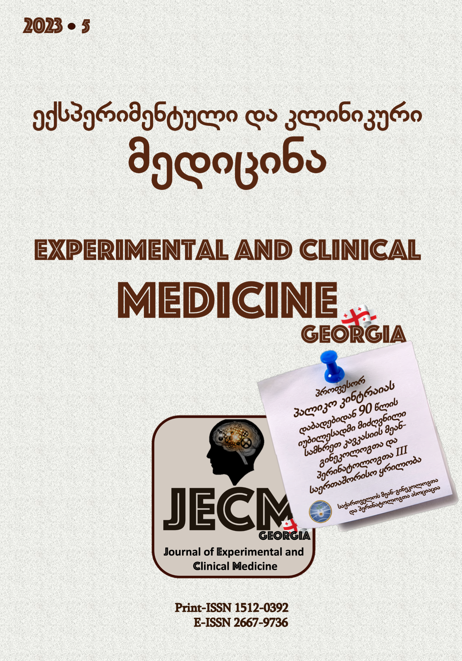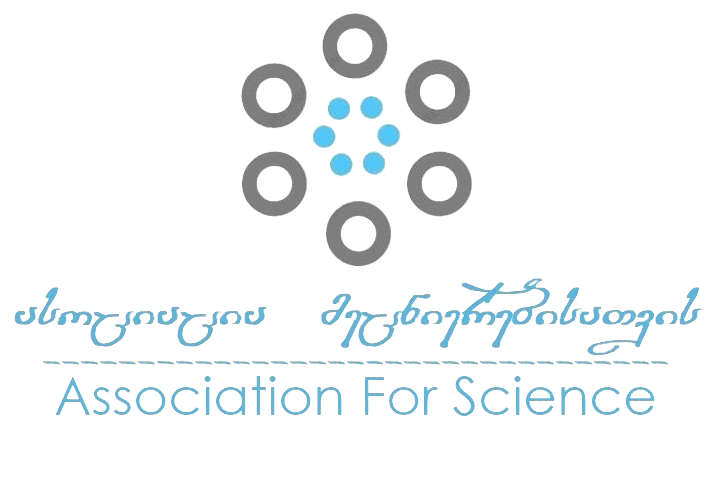PREGNANCY COMPLICATIONS IN PATIENTS WITH ENDOMETRIOSIS
DOI:
https://doi.org/10.52340/jecm.2023.05.26Keywords:
endometriosis, IVF, ART, spontaneous pregnancy, pregnancy complicationsAbstract
Introduction: Endometriosis is a chronic disease, which causes infertility in 40%. In case of ineffective therapy, assisted reproductive technology is indicated. Endometriosis is an independent risk factor for mother and fetus morbidities. Prenatal monitoring, is essential in prevention of pregnancy-related complications.
Objective: Evaluation and comparison the frequency of pregnancy complications in women with endometriosis after traditional treatment methods of infertility and after IVF.
Methods: Retrospective study included 320 patients aged 28-46, with different locations of endometriosis, diagnosed by laparoscopy. The patients were divided into two groups: I group – 170 pregnant women using the fertility treatment method – IVF and II group – 150 pregnant women conceived naturally. Pregnancy complications were evaluated and statistically analyzed.
Results: In pregnant women with endometriosis after IVF treatment the most common pregnancy complication was caesarian section - 79.4%, both emergency and elective. The frequency of preeclampsia was also high - 54.7%. The preterm birth occurred in 49.4%, the same trend was revealed in the II group - 52, 0%. Placenta previa and placenta abruption were rare in both groups 10.6% vs. 4.0% and 3.5% vs. 2%. In general, the adverse pregnancy outcome in the ART group was significantly higher compared to pregnant women conceived naturally except for the preterm delivery and abruption of the placenta.
Conclusions: IVF pregnancy in patients with endometriosis should be considered a high-risk pregnancy regarding adverse outcomes: cesarean section, preeclampsia and preterm delivery. However, these pregnancy complications should be linked to the endometriosis and infertility and may not to the ART.
Downloads
References
H. Dongye, Y. Tian, D. Qi, Y. Du, and L. Yan, “The Impact of Endometrioma on Embryo Quality in In Vitro Fertilization: A Retrospective Cohort Study,” J Clin Med, vol. 12, no. 6, p. 12, Mar. 2023, doi: 10.3390/JCM12062416/S1.
H. Li et al., “Effects of Previous Laparoscopic Surgical Diagnosis of Endometriosis on Pregnancy Outcomes,” Chin Med J (Engl), vol. 130, no. 4, p. 428, Feb. 2017, doi: 10.4103/0366-6999.199840.
A. Katole and A. Saoji, “Prevalence of Primary Infertility and its Associated Risk Factors in Urban Population of Central India: A Community-Based Cross-Sectional Study,” Indian J Community Med, vol. 44, no. 4, pp. 337–341, Oct. 2019, doi: 10.4103/IJCM.IJCM_7_19.
P. Pirtea, E. Cicinelli, R. De Nola, D. de Ziegler, and J. M. Ayoubi, “Endometrial causes of recurrent pregnancy losses: endometriosis, adenomyosis, and chronic endometritis,” FertilSteril, vol. 115, no. 3, pp. 546–560, Mar. 2021, doi: 10.1016/J.FERTNSTERT.2020.12.010.
G. Benagiano, I. Brosens, and D. Lippi, “The history of endometriosis,” GynecolObstet Invest, vol. 78, no. 1, pp. 1–9, 2014, doi: 10.1159/000358919.
A. V. Borisova, S. R. D. Konnon, V. Tosto, S. Gerli, and V. E. Radzinsky, “Obstetrical complications and outcome in patients with endometriosis,” J Matern Fetal Neonatal Med, vol. 35, no. 14, pp. 1–15, 2022, doi: 10.1080/14767058.2020.1793326.
S. Lalani et al., “Endometriosis and adverse maternal, fetal and neonatal outcomes, a systematic review and meta-analysis,” Hum Reprod, vol. 33, no. 10, pp. 1854–1865, Oct. 2018, doi: 10.1093/HUMREP/DEY269.
G. Bonavina and H. S. Taylor, “Endometriosis-associated infertility: From pathophysiology to tailored treatment,” Front Endocrinol (Lausanne), vol. 13, Oct. 2022, doi: 10.3389/FENDO.2022.1020827/FULL.
T. Tanbo and P. Fedorcsak, “Endometriosis-associated infertility: aspects of pathophysiological mechanisms and treatment options,” Acta ObstetGynecolScand, vol. 96, no. 6, pp. 659–667, Jun. 2017, doi: 10.1111/AOGS.13082.
S. E. Bulunet al., “17β-Hydroxysteroid Dehydrogenase-2 Deficiency and Progesterone Resistance in Endometriosis,” SeminReprod Med, vol. 28, no. 1, p. 44, 2010, doi: 10.1055/S-0029-1242992.
S. Epelboinet al., “Endometriosis and assisted reproductive techniques independently related to mother-child morbidities: a French longitudinal national study,” Reprod Biomed Online, vol. 42, no. 3, pp. 627–633, Mar. 2021, doi: 10.1016/J.RBMO.2020.11.017.
A. Agarwal, A. Aponte-Mellado, B. J. Premkumar, A. Shaman, and S. Gupta, “The effects of oxidative stress on female reproduction: a review,” Reprod Biol Endocrinol, vol. 10, Jun. 2012, doi: 10.1186/1477-7827-10-49.
H. S. Ghaheh, A. Feizi, M. Mousavi, D. Sohrabi, L. Mesghari, and Z. Hosseini, “Risk factors of placental abruption,” J Res Med Sci, vol. 18, no. 5, p. 422, 2013, doi: 10.23946/2500-0764-2017-2-3-42-45.
L. Marozioet al., “Maternal age over 40 years and pregnancy outcome: a hospital-based survey,” J Matern Fetal Neonatal Med, vol. 32, no. 10, pp. 1602–1608, May 2019, doi: 10.1080/14767058.2017.1410793.
T. Fujii et al., “Assisted reproductive technology pregnancy complications are significantly associated with endometriosis severity before conception: a retrospective cohort study,” Reprod Biol Endocrinol, vol. 14, no. 1, Nov. 2016, doi: 10.1186/S12958-016-0209-2.
B. C. Tarlatzis and G. Grimbizis, “Pregnancy and child outcome after assisted reproduction techniques,” Human Reproduction, vol. 14, no. suppl_1, pp. 231–242, Sep. 1999, doi: 10.1093/HUMREP/14.SUPPL_1.231.
Z. Khan, “Fertility-related considerations in endometriosis,” AbdomRadiol (NY), vol. 45, no. 6, pp. 1754–1761, Jun. 2020, doi: 10.1007/S00261-019-02307-6.
S. Epelboin et al., “Endometriosis and assisted reproductive techniques independently related to mother-child morbidities: a French longitudinal national study,” Reprod Biomed Online, vol. 42, no. 3, pp. 627–633, Mar. 2021, doi: 10.1016/J.RBMO.2020.11.017.






